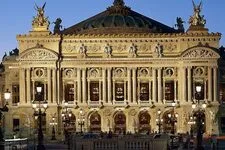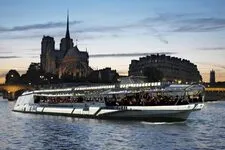Everything you need to know about the Tuileries Garden!

The story of a garden, theater of History
If in the 13th century the Tuileries were just a vast field of wasteland on which tile factories stood, Catherine de Medici, widow of King Henry II, completely transformed the face of the neighborhood. As early as 1564, the queen ordered the construction of the Tuileries Palace, which became the residence of many French sovereigns such as Henry IV, Louis XIV, and Napoleon Bonaparte. Alongside this work, an Italian-style garden was developed to the west of the palace. At the beginning of the 17th century, an orangery and a silk farm (silkworm breeding) were added to the decor.
In 1664, Louis XIV and his minister Jean-Baptiste Colbert decided to completely change the style of the Medici garden and asked the famous landscape architect of the time, André Le Nôtre, to redesign it entirely. The architect got to work and gave the garden the French style so appreciated at that time and that we know today. Indeed, Le Nôtre's plans have been preserved to this day, and visitors can still stroll through the paths laid out by the landscape architect. In the axis of the palace, Le Nôtre traced a large central avenue, stopped by a large round basin to the east and by a basin of octagonal shape. Along the banks of the Tuileries, the landscape architect had the water's edge terrace built, and the terrace of the Feuillants took place along what would later be Rue de Rivoli. Le Nôtre then adorned the garden with superb marble statues still visible today. It was in 1719 that it was decided to enhance the main entrance with two statues, each representing Mercury and Fame riding a winged mount.
The Tuileries garden was a direct witness to the History of France: during the uprising of 1789, Louis XVI and Marie Antoinette took refuge in the palace after the revolutionaries brought them back from the Palace of Versailles.
The Garden of Today
During the reign of Napoleon III, two identical buildings were erected to house a jeu de paume (ancestor of the Basque pelota) and an orangery, respectively. Today, the building housing the jeu de paume has become a contemporary art museum – the national gallery of the Jeu de Paume – and the orangery a modern art museum – the Orangerie Museum.
Many chairs now adorn the park, freely available for walkers who enjoy sitting near one of the ponds on nice days. Close to the Arc de Triomphe du Carrousel, a miniature sailboat rental delights children who have fun remotely guiding them on the waters of the second pond.
The garden also houses numerous statues by Aristide Maillol, one of the greatest sculptors of the 20th century, and the animal sculptures of Auguste Cain. Starting in 1998, the site has hosted new contemporary sculptures by Rodin, Henry Moore, Roy Lichtenstein, and many others. Temporary exhibitions regularly enliven the life of the garden.
Just across from the Tuileries Garden, by crossing the Seine, we suggest a dinner cruise aboard the Marina de Paris.
Access to the Tuileries Gardens: How to Get There Easily?
The Tuileries Gardens, located in the heart of Paris between the Place de la Concorde and the Louvre Museum, are easily accessible by public transport, on foot, or even by bike. Here are all the options to reach this haven of peace.
By Metro
- Concorde Station: Lines 1, 8, 12
- Tuileries Station: Line 1
By Bus
Several bus lines serve the areas around the Tuileries, including lines 72, 42, and 68, perfect for a smooth arrival.
On Foot
If you are exploring Paris, you can easily reach the Tuileries from:
- The Louvre (5 minutes on foot)
- Les Invalides (route from Les Invalides)
- Place Vendôme (7 minutes on foot)
- The Seine via the Pont Royal
By Bike or Scooter
The garden is surrounded by many Vélib’ stations and electric scooter parking. It’s an excellent way to get around while enjoying the Parisian scenery.
By Car
Parking around the Tuileries is difficult, but you will find underground parking nearby:
- Vendôme Parking
- Rivoli Pont Neuf Parking
💡 Good to know: The Tuileries Gardens are fully accessible to people with reduced mobility, with wide and usable paths for wheelchairs and strollers.
News from the Tuileries Gardens in 2025 and 2026
The coming years hold wonderful surprises for visitors to the Tuileries Gardens. New artistic installations, an impressive Olympic cauldron, and a major renovation project are on the agenda.
The Return of the Olympic Cauldron (Summer 2025-2028)
Good news for sports and Olympic heritage enthusiasts! After lighting up the capital during the Paris 2024 Olympic Games, the Olympic cauldron will return to the Tuileries starting in the summer of 2025.
Designed by Mathieu Lehanneur, this artistic installation will take the form of a helium-filled captive balloon, rising to 60 meters high to simulate a flame through a play of lights and mist. It will be visible every summer until 2028.
📅 Dates: from June 23 to September 14, 2025
💡 Come To Paris tip: For a stunning view of the cauldron, head to the terrace of the Louvre Museum.
🌿 A Major Renovation to Revitalize the Garden
The Louvre Museum, manager of the garden, has launched an ambitious restoration project aimed at restoring the Tuileries to their 17th-century splendor.
What Will Change:
✔ Replanting of trees and flower beds to enhance biodiversity
✔ New layout of the paths according to Le Nôtre's original plans
✔ Highlighting of historical sculptures and fountains
The work will span five years, with some temporary restrictions for visitors. Certain paths may be closed intermittently, but the iconic spaces will remain accessible.
💡 Tip: Combine your visit to the Tuileries with a discovery of the Sainte-Chapelle, another historical gem of Paris!
What to do at the Tuileries Gardens?
The Tuileries Gardens are not just a simple park: it is a true open-air museum, a place for relaxation, and an ideal starting point to explore Paris. Here are the best activities not to be missed.
Stroll through a landscape masterpiece
Created by André Le Nôtre in 1664, the garden follows a French classical architecture:
✔ Symmetrical paths and ponds offering unique perspectives
✔ Statues and sculptures by Maillol, Rodin, and Giacometti
✔ Iconic green chairs, perfect for a break by the pond
💡 Tip: Come early in the morning for a quiet walk or in the late afternoon to enjoy the sunset over the Place de la Concorde.
Visit the Orangerie Museum
Located at the western end of the garden, the Orangerie Museum houses an exceptional collection of impressionist and modern art.
✔ Monet's Water Lilies, an immersion in light and water
✔ Works by Renoir, Matisse, Picasso, and Modigliani
✔ A human-sized museum, perfect for a quick and enriching visit
📅 Hours: Open every day except Tuesday, from 9 AM to 6 PM
💰 Price: About €12.50, free on the first Sunday of the month
Enjoy must-see events
The Tuileries host major events every year, attracting both Parisians and tourists.
- Tuileries Funfair (June to August 2025): Rides, Ferris wheel, gourmet stands, and festive atmosphere
- PAD Paris Design (April 2-6, 2025): A design and decorative arts fair bringing together collectors from around the world
- Tuileries Christmas Market (Winter 2025-2026): An alternative to the Champs-Élysées Christmas Market, with gourmet and artisanal chalets
💡 Tip: After a day at the Tuileries, why not extend your walk by visiting the Conciergerie? This former royal palace, later a prison during the Revolution, is a place rich in history! Find the ticket from Come To Paris on the review of the Conciergerie.
Relax on a terrace or have a picnic
The Tuileries are perfect for a gourmet break, with several options:
- Picnic: Bring your lunch and settle around the large pond
- Angelina: The famous Parisian tea house, renowned for its hot chocolate and Mont-Blanc
- Terrace of the Orangerie Museum: A pleasant spot with a view of the garden
💡 Advice: To avoid the crowd, prefer weekdays and off-peak hours (before noon or after 3 PM).
Activities in the Surroundings

The Orangerie Museum of Paris

Guided tour of Opera Garnier

Bateaux Mouches Dinner Cruise in Paris
Practical information and tips for a successful visit
To fully enjoy your time at the Tuileries Gardens, here are some useful details.
📅 Opening hours
| Period | Hours |
|---|---|
| April to August | 7:00 AM - 9:00 PM |
| September to March | 7:30 AM - 7:30 PM |
💡 Free entry for everyone, no reservation required.
Prices and available services
✔ Free: Access to the garden, paths, and ponds
✔ Paid: Fairground rides, Orangerie Museum
✔ Public restrooms: Available at several locations in the park





